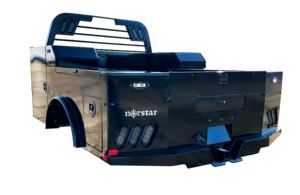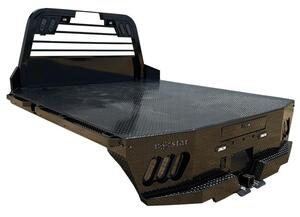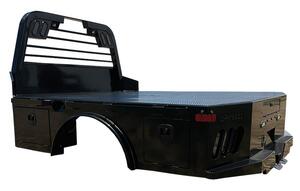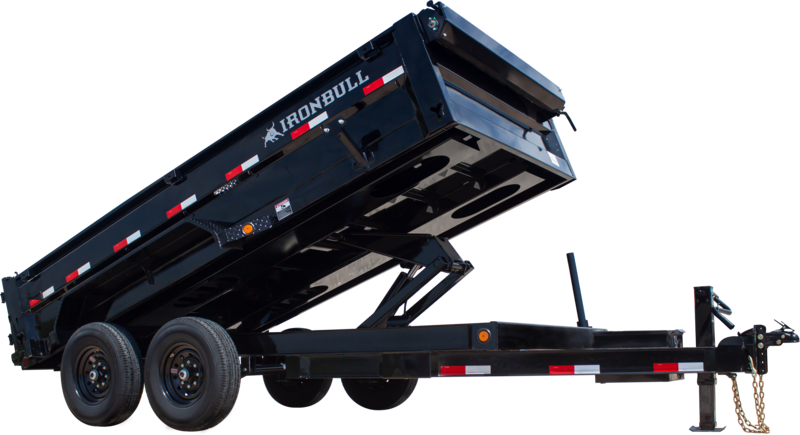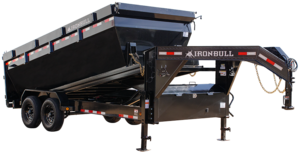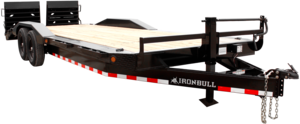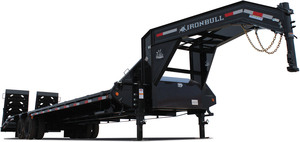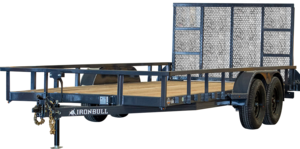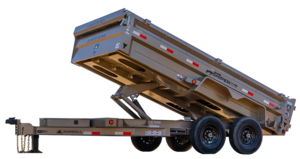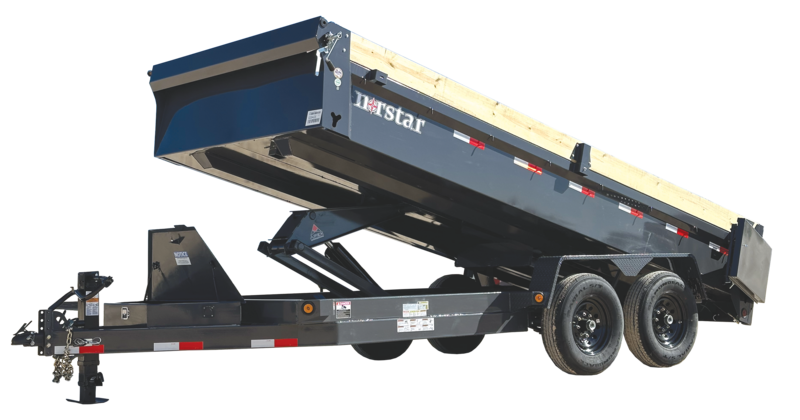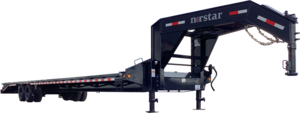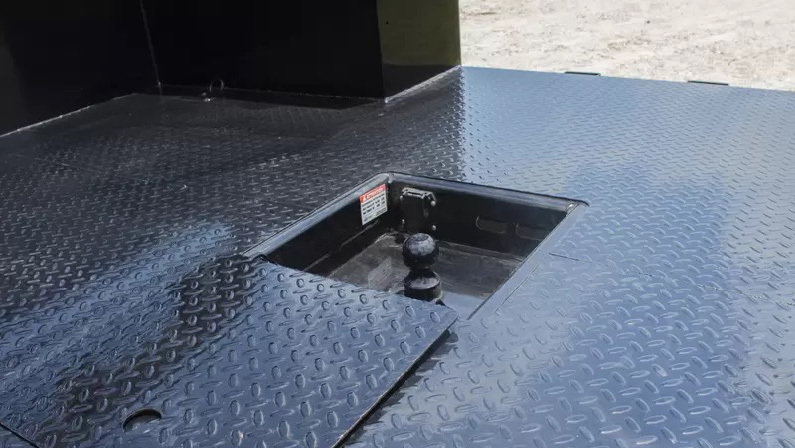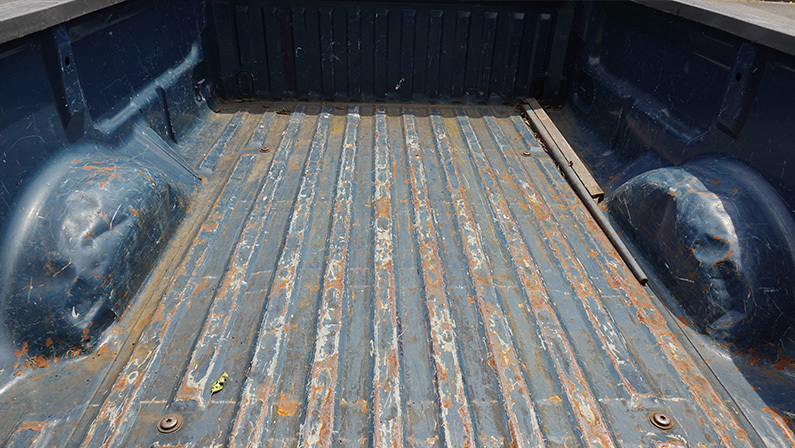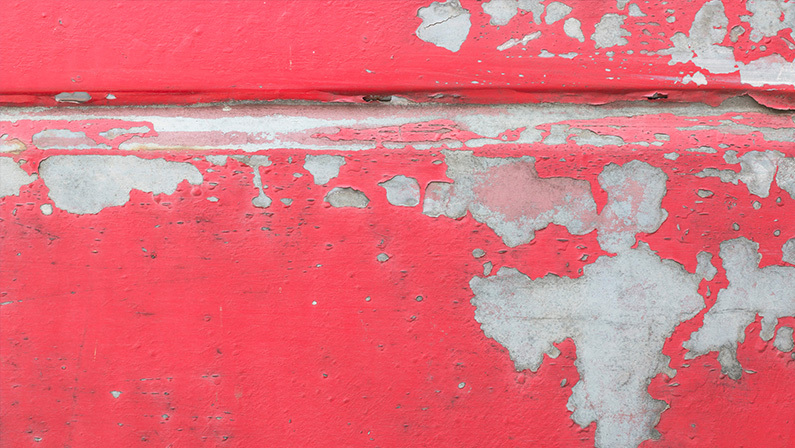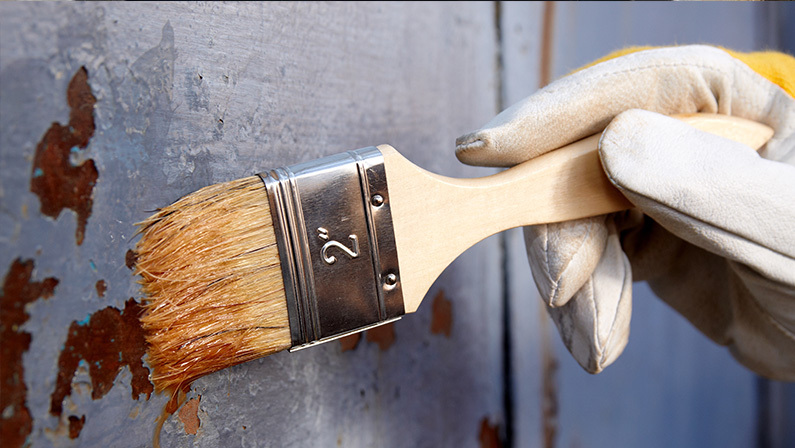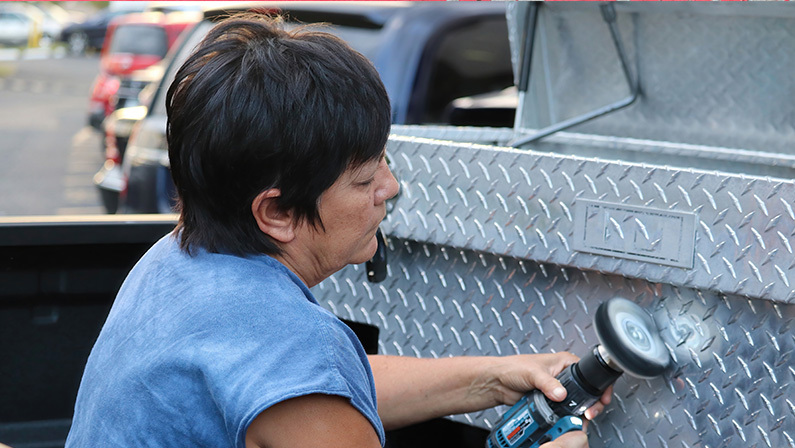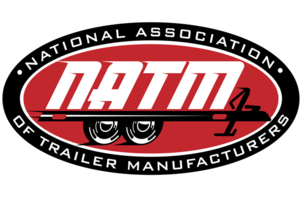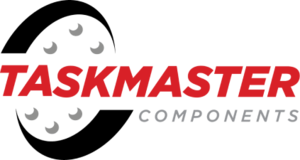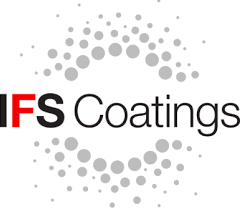How To Fix a Rusted Truck Bed: An Expert Guide
Your trusty truck has served you well, but over time, the wear and tear of everyday use may lead to a rusted truck bed.
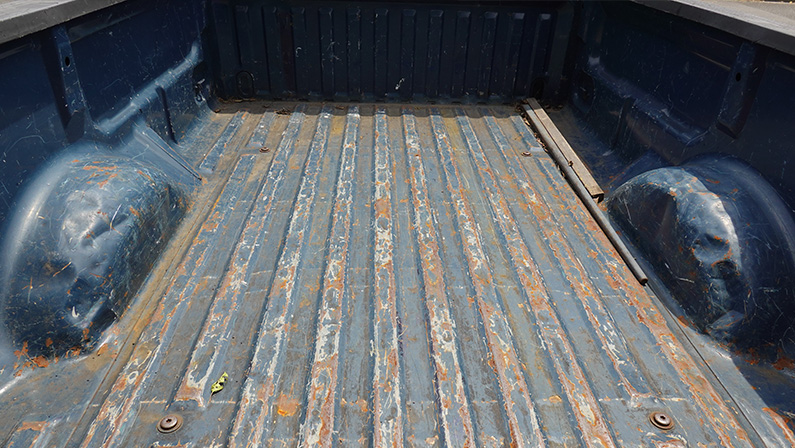
If you know how to fix a rusted truck bed, you can restore it to its former glory and make it last even longer.
This comprehensive guide will walk you through the steps to restore your rusted truck bed as we arm you with the right tools and a few handy tricks to tackle a repair project confidently.
What Causes Rust on Truck Beds?
Several factors contribute to the formation of rust, ranging from environmental conditions to everyday wear and tear.
Exposure to Moisture and Water
One of the primary culprits behind rust in truck bed is prolonged exposure to moisture and water. The metal surface becomes susceptible to oxidation when your truck bed comes into contact with rain, snow, or even humidity.
Water acts as a catalyst, accelerating the corrosion process. This is especially true if the moisture is allowed to accumulate and remain trapped on the truck bed's surface.
Road Salt and Chemicals
In regions where winter weather brings icy roads, road salt becomes a common sight. While salt helps melt snow and ice, it poses a significant threat to your truck bed's metal. Salt acts as an abrasive substance, promoting rust formation when it comes into contact with the metal surface.
Other chemicals, such as deicers and harsh cleaning agents, can also contribute to accelerated corrosion.
Scratches and Paint Damage
Scratches and paint damage may seem like minor cosmetic concerns, but they can lead to serious truck bed rust issues if left unattended. When the protective paint or coating on your truck bed is compromised, it exposes the bare metal underneath.
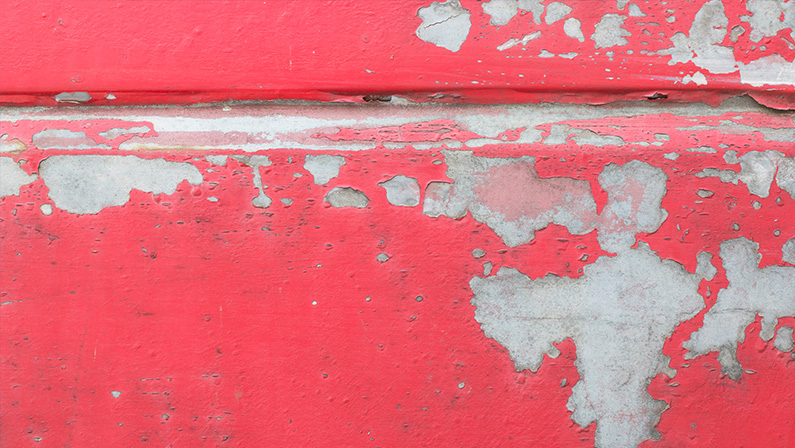
This leaves the surface vulnerable to moisture and other corrosive elements, leading to rust development. It's essential to address any scratches or paint damage promptly to prevent rust from taking hold.
Lack of Protective Coatings
Protective coatings play a vital role in preventing rust on truck beds. These coatings act as a barrier between the metal surface and external elements. Over time, however, these coatings can wear off or become damaged.
When the protective layer is compromised, the metal is left exposed and susceptible to rust formation. Regular maintenance and reapplication of protective coatings are essential to prevent corrosion.
How Can You Assess the Severity of Rust on a Truck Bed?
Before diving into the repair rusted truck bed, it's crucial to assess the severity of the rust damage. Understanding the extent of the corrosion will help you determine the appropriate truck bed rust repair approach and the level of effort required.
Visual Inspection of the Rust Damage
Begin by conducting a visual inspection of the rusted areas on your truck bed. Look for visible signs of rust, such as reddish-brown discoloration, flaking paint, or pitted metal surfaces. Pay close attention to corners, edges, and areas that are frequently exposed to moisture or road debris.
Note the size, location, and overall appearance of the rusted spots to gauge the severity of the damage.
Checking for Structural Integrity
Rust not only affects the aesthetics of your truck bed but can also compromise its structural integrity. Inspect the rusted areas for any signs of weakening or deformation. Press on the affected spots to check for softness, sponginess, or holes indicating severe corrosion.
Assess if the rust has penetrated deep into the metal, potentially compromising the strength and load-bearing capacity of the truck bed.
Determining the Extent of Surface and Structural Rust
To accurately assess the extent of the rust damage, it's crucial to differentiate between surface rust and structural rust. Surface rust typically appears as a thin layer on the metal surface and can be addressed relatively easily.
On the other hand, structural rust indicates deeper corrosion that may have weakened the metal. Use a small tool, like a screwdriver, to gently probe the rusted areas. If the metal feels solid beneath the surface rust, it's likely to cause surface corrosion.
However, if the tool easily penetrates or the metal flakes away, it suggests structural rust and requires more extensive repairs.
What Tools and Materials Do You Need to Fix a Rusted Truck Bed?
When it comes to fixing a rusted truck bed, having the right tools and materials is essential for a successful repair.
Here are five key items you'll need:
Safety Gear: Prioritize safety with gloves, goggles, and a dust mask to protect yourself from sharp edges, rust particles, and potentially harmful chemicals.
Rust Converter: Use a rust converter solution to halt the corrosion process and convert the rust into a stable surface for further treatment.
Wire Brush or Sandpaper: These tools help remove loose rust, paint, and debris from the affected areas, preparing the surface for repairs.
Body Filler or Bondo: Fillers are necessary to repair any dents, holes, or pits caused by rust. They provide a smooth surface for subsequent painting.
Primer and Paint: Once the rusted areas are repaired and prepped, apply a high-quality primer to protect the metal and ensure proper paint adhesion. Finish with a suitable paint designed for automotive applications.
How to Fix Minor Surface Rust on a Truck Bed?
If your truck bed has minor surface rust, addressing it promptly can prevent further corrosion and restore the appearance of your vehicle. Here's a step-by-step guide on fixing minor surface rust on a truck bed:
Cleaning the Rusty Area
Start by thoroughly cleaning the rusty area of the truck bed using a mild detergent or automotive cleaner. Remove any dirt, grime, or loose particles that may hinder the repair process. Rinse the area with clean water and allow it to dry completely before proceeding.
Removing Loose Rust and Paint
Using a wire brush or sandpaper, gently scrub the affected area to remove any loose rust, flaking paint, or debris. Focus on the rusted spots, ensuring you reach bare metal. Be careful not to damage the surrounding paint or create deeper scratches.
Applying Rust Converter or Remover
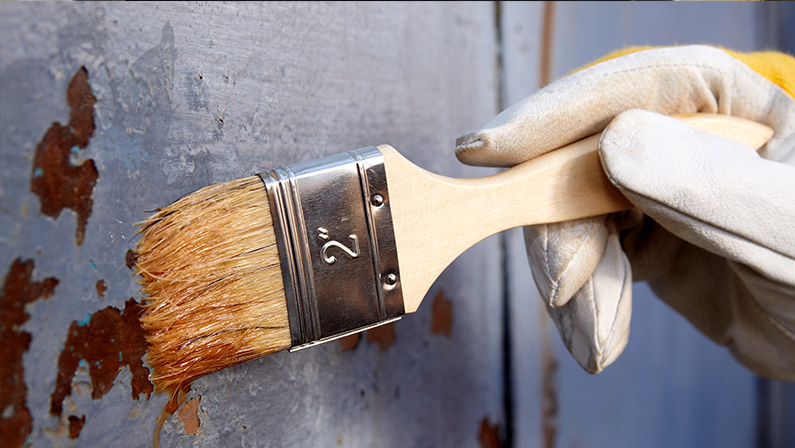
Apply a rust converter or rust remover to the cleaned surface following the product instructions. Rust converters chemically react with the rust, transforming it into a stable compound that can be painted over. Rust removers dissolve the rust, facilitating its removal. Choose the appropriate product based on the severity of the rust and follow the recommended application method.
Sanding and Smoothing the Surface
After the rust converter or remover has dried, use fine-grit sandpaper to smooth the surface. This step helps create a level and even surface for the subsequent layers of primer and paint. Sand gently in circular motions, paying attention to blending the edges with the surrounding areas.
Applying Primer and Paint for Protection
Apply a layer of automotive primer to the repaired surface. The primer acts as a protective barrier between the metal and the environment. Allow the primer to dry as per the manufacturer's instructions, and then proceed to apply the appropriate automotive paint, matching the color of your truck bed. Apply multiple thin coats, allowing each coat to dry before adding the next one for a smooth and durable finish.
What Steps Are Involved in Repairing Extensive Rust Damage on a Truck Bed?
When extensive rust damage has affected your truck bed, a more involved repair process is required to restore its functionality and appearance.
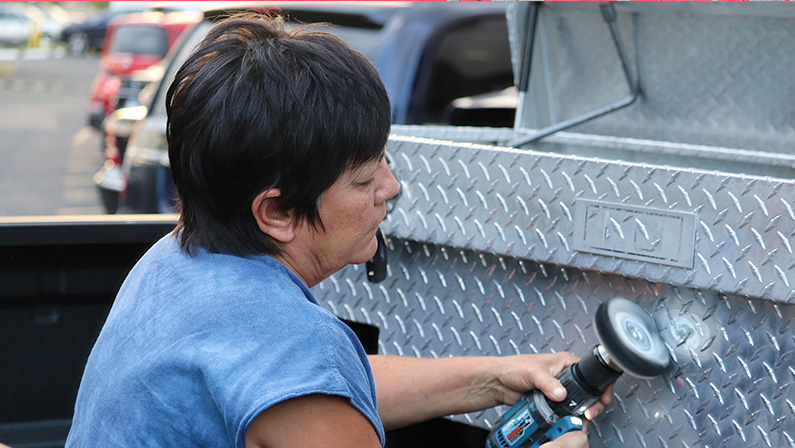
Follow these steps to tackle extensive rust damage effectively:
Removing Damaged Sections or Panels
Inspect the rusted areas and identify sections or panels that are beyond repair. Carefully remove these damaged sections using appropriate tools like a cutting wheel, or reciprocating saw. Take caution to avoid damaging the surrounding metal that is still in good condition.
Welding or Patching Holes and Weak Areas
If your truck bed has holes or weak areas due to rust damage, welding or patching is necessary. Welding may be the preferred method for smaller holes to fill and reinforce the affected areas. Larger holes may require patching with sheet metal and securing it in place with rivets, screws, or welding. Ensure a strong and secure repair to restore the structural integrity of the truck bed.
Treating the Remaining Rust and Surface Preparation
Treat the remaining rusted areas using a rust converter or remover to halt corrosion. Follow the product instructions to apply the converter or remover, ensuring thorough coverage. Once the rust is treated, clean the surface and remove any loose rust, debris, or old paint using a wire brush, sandpaper, or sanding disc. This prepares the surface for the application of protective coatings.
Applying Protective Coatings and Paint
Apply a high-quality protective coating to the repaired areas and the entire truck bed. This may include rust inhibitors, epoxy primers, and automotive-grade undercoating. These coatings provide additional protection against moisture, road debris, and future rust formation. After the protective coatings have cured, apply automotive paint that matches your truck bed's color for a finished and polished appearance.
Can You DIY, or Should You Seek Professional Help for Rust Repairs?
When it comes to rust repairs on a truck bed, the decision to DIY or seek professional help depends on several factors.
Minor surface rust and small repairs can often be tackled as a DIY project, especially if you have some experience with automotive repairs and access to the necessary tools. DIY repairs can save you money and provide a sense of accomplishment.
However, extensive rust damage, structural issues, or lack of experience may warrant seeking professional assistance.
Professionals have the expertise, specialized equipment, and knowledge to handle complex repairs and ensure long-lasting results. They can accurately assess the severity of the rust damage, offer expert advice, and perform repairs using industry-standard techniques.
Ultimately, the choice between DIY and professional help depends on your comfort level, skill set, and the extent of the rust damage. Prioritize safety and quality of repair, and consider consulting with professionals if needed to make an informed decision.
How to Prevent Future Rust Issues on a Truck Bed?
Preventing future rust issues on your truck bed is essential for maintaining its appearance and structural integrity.
Here are four key measures you can take to minimize the risk of rust:
Regular Cleaning and Maintenance
Frequent cleaning of your truck bed, particularly after exposure to moisture or road salt, helps remove dirt, debris, and corrosive substances that can contribute to rust formation.
Apply Protective Coatings
Consider applying a protective coating specifically designed for truck beds, such as a spray-on bedliner or rust-resistant paint. These coatings act as a barrier, shielding the metal from moisture, chemicals, and abrasion.
Avoid Scratches and Paint Damage
Be mindful of potential scratches or damage to the paint on your truck bed. Promptly touch up any chips or scratches using a matching paint to prevent moisture from reaching the bare metal.
Rust-Proofing Treatments
Periodically apply rust-proofing treatments to your truck bed. These treatments help to seal and protect the metal surfaces, inhibiting rust formation and prolonging the lifespan of your truck bed.
Are There Alternative Solutions for Severely Rusted Truck Beds?
Aside from knowing how to fix truck bed rust with tools and techniques, there are alternative solutions to consider before resorting to full replacement.
Here are three options:
Rust Inhibitor Treatments: Rust inhibitor treatments can help slow down or halt the progression of rust on a severely rusted truck bed. These treatments penetrate the rust and form a protective barrier, preventing further corrosion.
Rust Encapsulation: Rust encapsulation involves encapsulating the rusted areas with a specialized coating or primer. This coating seals the rust and prevents oxygen and moisture from reaching the metal surface, effectively stopping corrosion.
Partial Replacement: In some cases, it may be possible to replace only the severely rusted sections or panels of the truck bed rather than replacing the entire bed. This option can be more cost-effective while still addressing the most affected areas.
A Truck Bed Built to Last a Lifetime
Repairing rusted truck beds is an important task to maintain the functionality and appearance of your vehicle. Following the steps, you can effectively address minor surface rust and extensive rust damage.
Remember to assess the severity of the rust, gather the necessary tools and materials, and take appropriate safety precautions. Whether you choose to tackle the repairs yourself or seek professional help, prioritize the long-term durability and protection of your truck bed.
In your search for high-quality truck beds and trailers, consider Norstar Company as a trusted provider in Texas. Norstar offers durable and reliable truck beds and trailers that can withstand the demanding nature of your work. Our products are designed to endure the daily grind and provide the strength and resilience required for your tasks.
Take the first step towards protecting your truck bed and ensuring its longevity. Invest in quality repairs and reliable truck bed solutions to maintain the performance and appearance of your vehicle for years to come.




